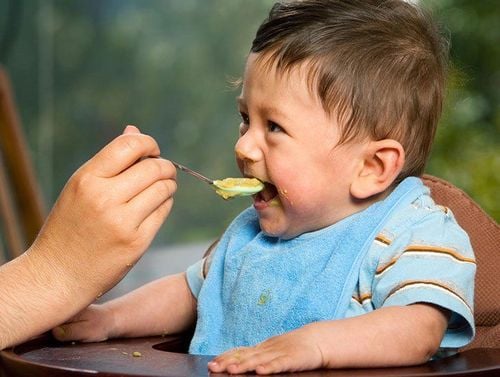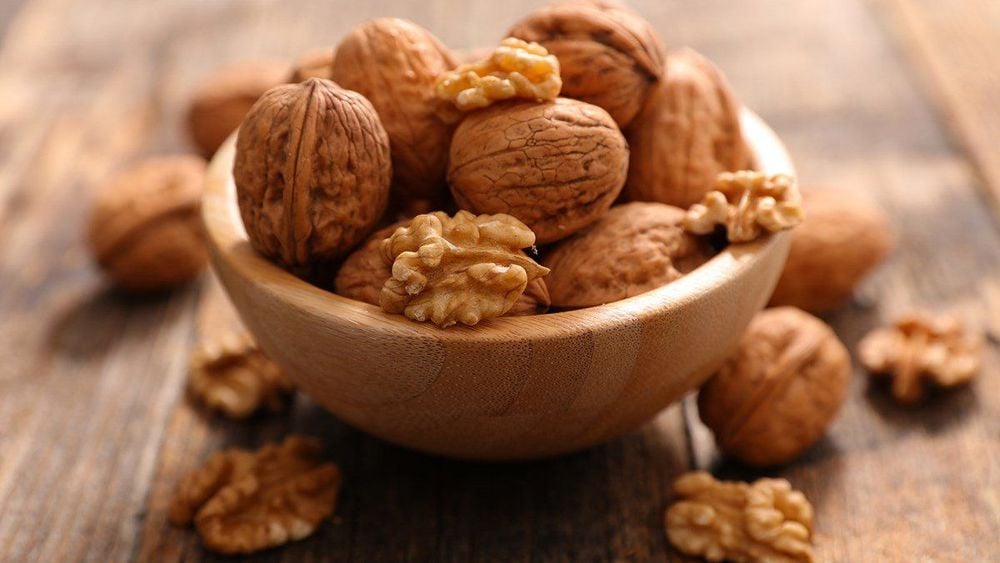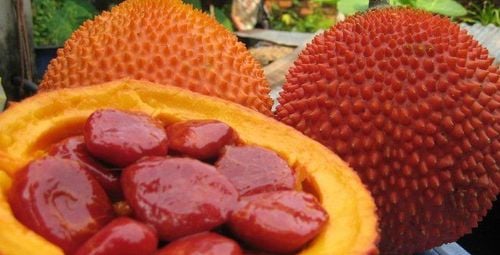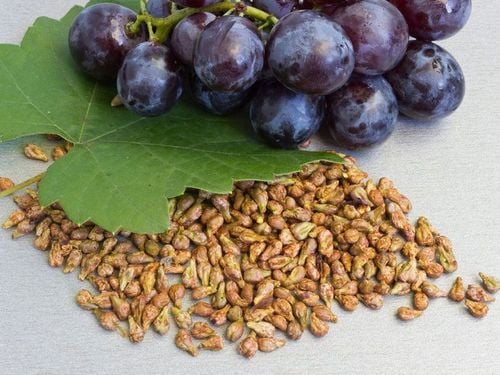This is an automatically translated article.
Walnuts belong to the group of nuts and are classified as healthy foods for children. One of the effects of walnuts for children is to stimulate taste, prevent chronic diseases and promote brain development... Therefore, parents can add walnuts to their diets. daily for children.
1. Composition of nutrients in walnuts
Nutritional composition of walnuts is mainly fat (65%), protein 15%. The fat in walnuts is mainly polyunsaturated fat and is quite rich with fatty acids such as Omega-6 and Omega 3. These types of fats are good for heart health, help reduce inflammation and improve blood lipid composition. In addition, walnuts also contain other nutrients such as vitamins and minerals, especially vitamin E and vitamin B6 to help strengthen the immune system and support mental health.
Other ingredients in walnuts include:
Ellagic acid, known as an antioxidant, is high in walnuts and has the effect of helping to reduce the risk of heart disease and prevent cancer; Catechin belongs to the group of flavonoids that have many benefits for heart health; Melatonin - a nerve hormone that helps balance the activities of the circadian clock.

Một trong những tác dụng của hạt óc chó đối với trẻ nhỏ là kích thích vị giác
2. The effect of walnuts on children
In Western countries, walnuts are quite popular and are recommended to be used in the daily diet. In our country, parents are still wondering about "the effects of walnuts on children" or "whether walnuts are good for children".
With the above nutritional ingredients, walnuts are a good choice in the children's nutritional menu. Using walnuts for children in the right way and in the right dose will bring some effects as follows:
Provide calcium content to help children develop comprehensively the skeletal system. The infant's skeletal system is made up of cartilage. Therefore, when touching the child's body, the child's bones will feel quite soft. However, by the time a child is 1 year old, the cartilage will turn into bone. This is also the time when children need calcium supplements to help build strong bones. During this period, in addition to adding milk in the child's diet, parents can use walnuts instead, because the calcium content in walnuts is equivalent to cow's milk. Along with 30 grams of walnuts providing 18 grams of fat, 15.5 grams of ALA helps to develop comprehensive and strong bones. Walnuts help children promote brain development, increase intelligence because it contains a lot of omega 3. Therefore, if you are still wondering "is it good for children to eat walnuts", then add a fruit. this into your baby's nutrition to support your baby's good development. Walnuts also help children prevent chronic diseases effectively. Omega 3 fatty acids combined with Omega 6 available in walnuts can give children a solid "shield" to prevent chronic diseases such as respiratory failure, hand, foot and mouth disease, nasopharyngitis, acute diarrhea ... Besides, the composition of ellagic acid in walnuts also ensures to maintain a healthy immune system of children and prevent the growth of uncontrolled cancer cells. One of the effects of walnuts for young children is to stimulate their taste buds to help them eat more deliciously. Therefore, parents can add walnuts to their children's daily diet to help them feel the change in taste.
3. How to use walnuts in children's meals
In addition to learning about what walnuts do for children, how to use this fruit to maximize its benefits is also very important. Depending on the age and development of the child, the correct way to use walnuts will be different.
If the child is too young, has not started weaning and is familiar with food, you can puree walnuts and use this mixture to cook porridge or make milk for children to use every day.
If the child is older and the child is already eating foods, parents can use walnuts flexibly in the child's diet. For example, parents can use roasted or baked walnuts or deep fried... Depending on the child's preferences, parents can perform different processing methods to create an attractive dish for the child.
Parents can use about 4 to 5 walnuts and are divided equally among meals throughout the day to ensure adequate supply of nutrients needed for the physical and intellectual development of children. However, do not use too many walnuts, causing the digestive system of children to work too hard to absorb nutrients and eliminate waste.

Tác dụng của hạt óc chó đối với trẻ nhỏ là ngăn ngừa các bệnh mãn tính và thúc đẩy phát triển trí não
4. Some possible side effects when using walnuts
Walnuts contain nutrients that are quite good for human health. However, because walnuts belong to the group of nuts, using walnuts can also have some side effects on health. Therefore, when using walnuts for young children, parents need to slowly familiarize their children with this type of nut.
Some possible side effects when using walnuts include:
Food allergies : Walnuts are listed as one of the 8 most allergenic foods in the world. . When an allergic condition occurs, it will often be accompanied by many serious symptoms, sometimes even causing anaphylaxis. More serious can make the patient die due to not responding in time. Reduced absorption of minerals in the body: Walnuts are similar to other nuts, the nutritional composition is very rich in phytic acid. When using a diet that includes foods rich in phytate, it can reduce the ability to absorb minerals such as iron, zinc ... from the digestive tract. This results in a mineral deficiency in the body. Walnuts bring a lot of health benefits, especially cardiovascular diseases or antioxidant problems. However, when using walnuts for babies, parents also need to learn how to use and the right dosage to maximize the nutritional value of this nut.













